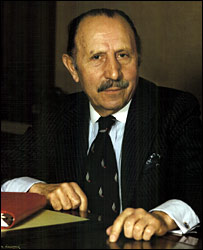쿠데 섬
Coode Island| 쿠데 섬 빅토리아 | |
|---|---|
 섬의 동쪽을 따라 컨테이너 부두가 있습니다. | |
| 좌표 | 37°48(55°S) 144°542626eE/37.81528°S 144.90722°E |
| 승진 | 5 m (16 피트) |
| 지역 | 0.97km2(0.4평방마일) |
| 지역 | 웨스트멜버른 |
쿠드 섬은 호주 멜버른 중심부에서 서쪽으로 4km 떨어진 야라 강과 마리비롱 강이 만나는 곳에 있는 옛 섬이다.이 섬은 1887년 쿠드 운하의 발굴에 의해 형성되었고 1930년대에 [1]본토와 연결되었다.오늘날 저지대는 멜버른 항구의 일부이며, Swanson과 Appleton Docks, 그리고 관련 컨테이너 저장소와 철도 야드, 그리고 많은 화학 저장 시설로 사용되고 있습니다.
역사
1880년대 이전에는 쿠드 섬 지역이 넓은 저지대 습지였다.이 [2][3]섬은 1886년 야라 강의 길이를 줄이기 위해 쿠드 운하가 파인 이후 본토로부터 고립되었다.멜버른 항구에서 야라빌까지 접근할 수 있도록 피셔만 벤드를 통해 강의 기존 항로 남쪽에 운하가 건설되었습니다.그 경계는 남쪽의 운하, 서쪽의 마리비롱 강, 북쪽과 동쪽의 야라 강이었다.그 섬은 일단 형성되자 97헥타르의 산업 지역이 되었다.이 섬의 이름은 멜버른 항구의 일부로서 운하를 위한 최적의 항로를 선정하기 위해 멜버른 하버 트러스트에 의해 고용된 영국의 항구 엔지니어 존 쿠드의 이름을 따서 지어졌다.예전의 야라강 유로는 오랜 세월 동안 서서히 늪과 함께 채워졌고, 20세기 중반에는 쿠데섬이라는 이름은 남아있지만 더 이상 진정한 섬이 아니었다.
1909년까지 이 지역은 동물 검역소로 사용되었고 1915년 이후에는 부본성 페스트와 다른 전염병 [4]희생자들의 요양원으로 사용되었다.1920년대까지 그 지역에는 오두막과 버려진 배에서 사는 은둔자들이 살았다.1927년 라킨 항공 공급 회사는 제2차 세계대전까지 사용되었던 공장과 [5][6]비행장을 포함한 이 섬에 운영을 시작했다.
1960년에 이 지역은 석유 화학의 저장소로 사용되기 시작했다.1968년 스완슨 선착장 컨테이너 터미널이 옛 섬 남쪽에 건설되면서 쿠데 섬의 크기가 줄어들었다.
1991년 8월 21일 앵커 탱크 시설에서 세인트 엘모의 불이 저장 탱크 중 하나에 점화되어 쿠드 섬 [7]폭발이 일어났다.아크릴로니트릴과 벤젠을 포함한 약 850만 리터의 유기화합물이 연소되어 강풍에 의해 [8][9][10][11]흩어진 인근 주택가 근교에 유독성 구름이 형성되었다.탱크 간 점화 확산은 공통 환기구 시스템을 통해 이루어졌으며, 질소 블랭킷은 탱크가 설계되었을 때 불필요한 것으로 간주되었으며, 환경 목적을 위해 [12]증기를 회수할 수 있도록 나중에 변경 사항으로 공통 환기구 시스템이 설치되었다.
이 [13][14]시설을 질롱 인근의 포인트 릴리아스로 옮기자는 제안이 있었지만 환경 및 원주민 유산 문제로 인해 계획이 무산됐다.2000년 Bracks 정부는 Coode Island가 빅토리아주의 주요 석유화학 저장 시설의 부지가 될 것이라고 발표했으며, 6개 회사가 멜버른 항만청으로부터 시설을 임대했습니다.
「 」를 참조해 주세요.
레퍼런스
- ^ "Coode Island". Victorian Places. Monash University, University of Queensland. 2015. Retrieved 18 September 2019.
- ^ "History of the port". Port of Melbourne. Archived from the original on 7 September 2012. Retrieved 21 August 2008.
- ^ "Great Harbour Projected". The Argus: An Historic Souvenir. Melbourne. 9 September 1926.
- ^ "Coode Island". The Sydney Morning Herald. 3 July 1915.
It is proposed that returning soldiers suffering from contagious diseases, such as typhoid fever and measles, shall be accommodated at Coode Island
- ^ Smith, Ann G. (1983). "Larkin, Herbert Joseph (1894–1972)". Australian Dictionary of Biography Online. Retrieved 21 August 2008.
- ^ "Coode Island Air Port". The Argus. 14 September 1927. p. 23.
- ^ "Coode Island, Melbourne, Vic: Explosion & Chemical Fire". Emergency Management Australia. Archived from the original on 16 September 2008. Retrieved 21 August 2008.
- ^ "Chemical accidents at Coode Island". Hazardous Materials Action Group. 1991 Aug 21-22. Archived from the original on 19 April 2011.
Fire and explosion in tanks at Terminals, involving acrylonitrile (acts like cyanide on the human body), Benzene (effects nervous system and causes leukaemia), Phenol and Methyl Ethyl Ketone. Residents and workers evacuated from the immediate vicinity; other residents told to stay inside. Smoke plume carried as far as Fern Tree Gully and covered the Central Business District. A number of firefighters were injured.
- ^ Coode Island Community Consultative Committee (March 1992). "Coode Island Review Panel, FINAL REPORT". State Government of Victoria.
- ^ Gibson, Kathy; O'Donovan, Gary. "Don't Mention It - Coode Island and Environmental Disclosure Strategies in the Australian Chemicals Industry" (PDF). Edwards School of Business. Archived from the original (PDF) on 24 March 2012.
- ^ Clive Hale (1991). "Coode Island chemical fire". YouTube. ABC News. Archived from the original on 14 December 2021.
- ^ Trevor Kletz - 사고로부터 학습
- ^ "About Coode Island". Coode Island Community Consultative Committee. July 2015. Retrieved 18 September 2019.
- ^ "The Point Lillias Chemical Storage Facility: A proposed chemical storage facility for Victoria". Chemlink. 2006.





